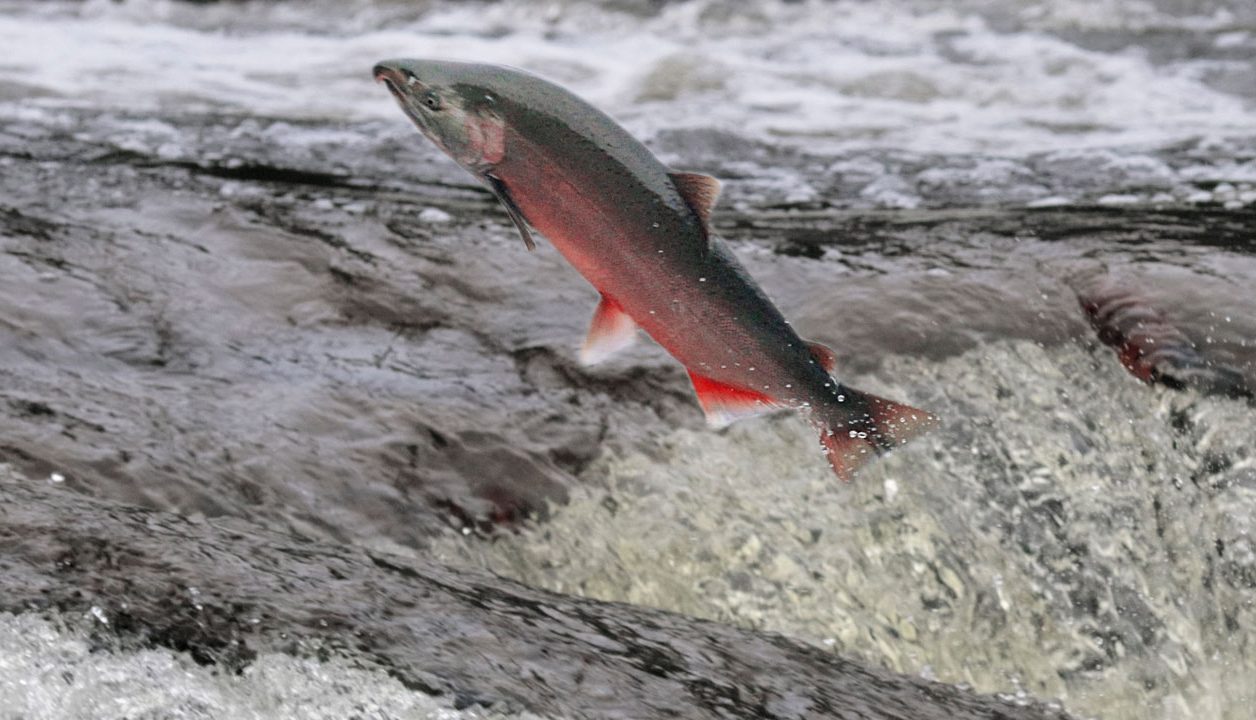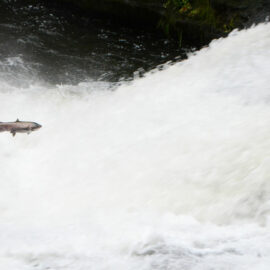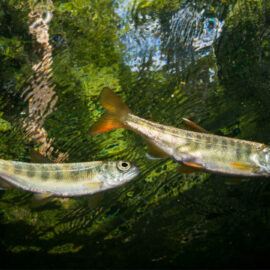Three strongholds for wild Oregon Coast coho—the Upper Rogue, Coos Bay, and Siletz—will benefit from a $2.3 million federal grant to restore habitat for this threatened keystone species.
The National Oceanic and Atmospheric Administration (NOAA) Restoration Center recently granted the Wild Salmon Center $2.3 million to restore critical habitat in support of coho recovery on the Oregon Coast. WSC and its partners in the Coast Coho Partnership will use the funds to expand ongoing restoration efforts in the Upper Rogue, Coos Bay, and Siletz River watersheds. The program is part of a broader effort WSC is undertaking to protect and restore coastal watersheds and recover Oregon Coast coho.
“The Oregon coast represents one of the most important collections of salmon strongholds south of Alaska,” says Mark Trenholm, WSC’s Coastal Program Director. “As the impacts of climate change accelerate, targeted protection and restoration is essential to ensure a future for salmon.”
Once abundant throughout coastal Oregon, coho numbers winnowed as historic land use practices (including timber, agriculture, and development) decimated salmon spawning and rearing habitat. The impact of coho declines goes far beyond the loss of fishing opportunities for the communities that depend on them. Coho are a keystone species; when coho habitat is protected and restored, a positive ripple effect is felt by many other species, including steelhead, Chinook, chum—and humans.
“Coho is unique among Pacific salmon in that it lives a full year in the watershed before heading to sea,” Trenholm says. “So when you protect and restore its habitat in streams and estuaries, you generate co-benefits like improved water quality, flood mitigation, and recreation.”
Federal recovery plans for the threatened Oregon Coast coho call for a coordinated recovery effort that engages local partnerships in watershed scale planning. The Coast Coho Partnership, managed by the Wild Salmon Center, has developed a science-based approach to identify restoration priorities and guide partners in choosing the highest value projects within a watershed. Since 2018, Wild Salmon Center and the Coast Coho Partnership have leveraged over $6 million to support locally-led restoration.
“Coho is unique among Pacific salmon in that it lives a full year in the watershed before heading to sea,” Trenholm says. “So when you protect its habitat, you generate co-benefits.”
The new award follows a 2017 NOAA grant to WSC to develop and implement coho recovery plans in the Nehalem, Siuslaw, and Elk River watersheds. This first grant—along with matching funds provided by the Oregon Watershed Enhancement Board and the National Fish and Wildlife Foundation—supported the construction of 28 beaver dam analogs in the Nehalem River, large-scale wood installation in the Siletz River, and floodplain reconnection work on agricultural lands in the Elk River.
NOAA’s new funding, which will be disbursed over three years starting in 2020, will enable the partnership to expand its efforts to three additional coho strongholds: the Coos Bay, Upper Rogue, and Siletz River watersheds. Funded projects will include reestablishing migration corridors, restoring cold-water refuges, enhancing streamside vegetation, and reopening tidal wetlands and floodplains for coho.
“Work remains, but we’re seeing partners at all levels—local, state, federal, tribal, and private—pulling in the same direction,” Trenholm says. “We believe coho recovery is possible on the Oregon Coast.”



